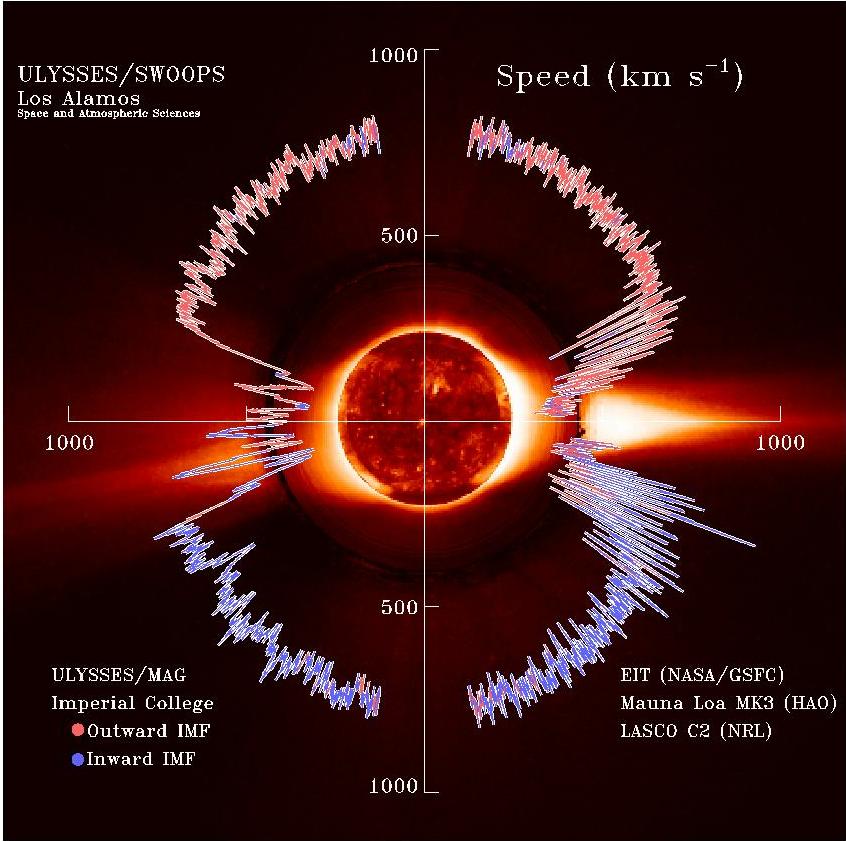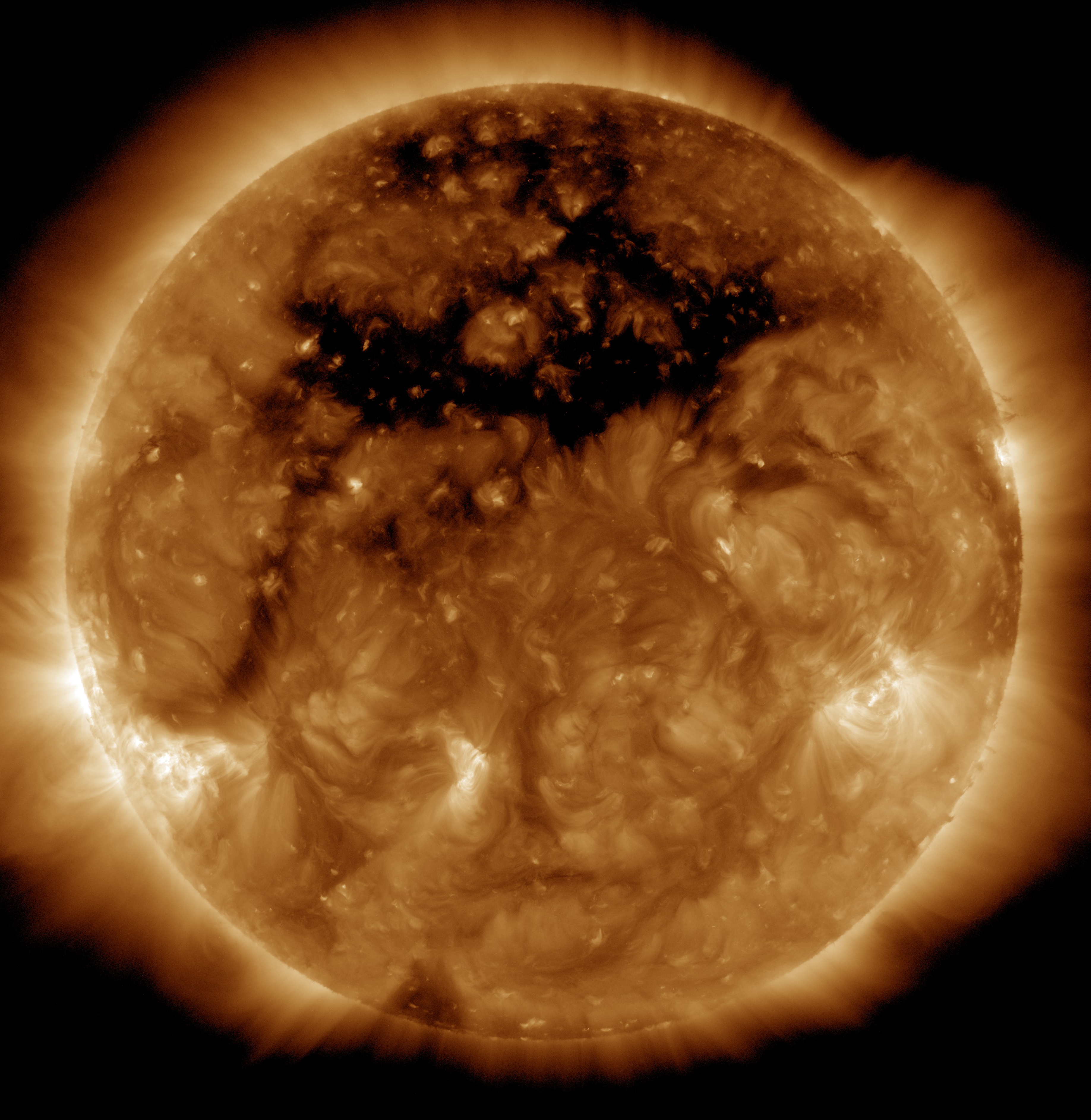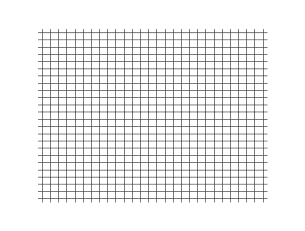|
Corotating Interaction Region
A corotating interaction region (CIR) is a recurring plasma structure in the heliosphere formed when fast solar wind streams interact with slower solar wind ahead of them. This interaction creates a compressed region that appears to rotate with the Sun's rotation; accordingly it is named "corotating". CIRs develop when high-speed solar wind, typically originating from coronal holes, catches up to slower wind streams. The resulting compression creates distinct boundaries: a forward pressure wave at the leading edge and a reverse pressure wave at the trailing edge. At greater distances from the Sun, these pressure waves can develop into shock waves. The three-dimensional structure of CIRs is influenced by the Sun's magnetic field configuration. Because the Sun's magnetic equator is often tilted and warped relative to its rotational equator, CIRs typically show significant north–south tilts that differ between hemispheres. The forward waves tend to move toward the solar equatorial ... [...More Info...] [...Related Items...] OR: [Wikipedia] [Google] [Baidu] |
Heliosphere
The heliosphere is the magnetosphere, astrosphere, and outermost atmospheric layer of the Sun. It takes the shape of a vast, tailed bubble-like region of space. In plasma physics terms, it is the cavity formed by the Sun in the surrounding interstellar medium. The "bubble" of the heliosphere is continuously "inflated" by plasma originating from the Sun, known as the solar wind. Outside the heliosphere, this solar plasma gives way to the interstellar plasma permeating the Milky Way. As part of the interplanetary magnetic field, the heliosphere shields the Solar System from significant amounts of cosmic ionizing radiation; uncharged gamma rays are, however, not affected. Its name was likely coined by Alexander J. Dessler, who is credited with the first use of the word in the scientific literature in 1967. The scientific study of the heliosphere is heliophysics, which includes space weather and space climate. Flowing unimpeded through the Solar System for billions of kilo ... [...More Info...] [...Related Items...] OR: [Wikipedia] [Google] [Baidu] |
Solar Wind
The solar wind is a stream of charged particles released from the Sun's outermost atmospheric layer, the Stellar corona, corona. This Plasma (physics), plasma mostly consists of electrons, protons and alpha particles with kinetic energy between . The composition of the solar wind plasma also includes a mixture of particle species found in the solar plasma: trace amounts of heavy ions and atomic nuclei of Chemical element, elements such as carbon, nitrogen, oxygen, neon, magnesium, silicon, sulfur, and iron. There are also rarer traces of some other nuclei and isotopes such as phosphorus, titanium, chromium, and nickel's isotopes 58Ni, 60Ni, and 62Ni. Superimposed with the solar-wind plasma is the interplanetary magnetic field. The solar wind varies in density, temperature and speed over time and over Solar coordinate systems#Heliographic, solar latitude and longitude. Its particles can escape the Sun's gravity because of their high energy resulting from the high temperature of t ... [...More Info...] [...Related Items...] OR: [Wikipedia] [Google] [Baidu] |
Coronal Hole
Coronal holes are regions of the Sun's corona that emit low levels of ultraviolet and X-ray radiation compared to their surroundings. They are composed of relatively cool and tenuous plasma (physics), plasma permeated by magnetic fields that are open to interplanetary space.Freedman, Roger A., and William J. Kaufmann III. "Our Star, the Sun." Universe. 8th ed. New York: W.H. Freeman, 2008. 419–420. Print. Compared to the corona's usual closed magnetic field that arches between regions of opposite magnetic polarity, the open magnetic field of a coronal hole allows solar wind to escape into space at a much quicker rate. This results in decreased temperature and density of the plasma at the site of a coronal hole, as well as an increased speed in the average solar wind measured in interplanetary space. Streams of fast solar wind originating from coronal holes can interact with slow solar wind streams to produce corotating interaction regions. These regions can interact with Earth's ... [...More Info...] [...Related Items...] OR: [Wikipedia] [Google] [Baidu] |
Pressure Wave
Longitudinal waves are waves which oscillate in the direction which is parallel to the direction in which the wave travels and displacement of the medium is in the same (or opposite) direction of the wave propagation. Mechanical longitudinal waves are also called ''compressional'' or compression waves, because they produce compression and rarefaction when travelling through a medium, and pressure waves, because they produce increases and decreases in pressure. A wave along the length of a stretched Slinky toy, where the distance between coils increases and decreases, is a good visualization. Real-world examples include sound waves (vibrations in pressure, a particle of displacement, and particle velocity propagated in an elastic medium) and seismic P waves (created by earthquakes and explosions). The other main type of wave is the transverse wave, in which the displacements of the medium are at right angles to the direction of propagation. Transverse waves, for instance, descri ... [...More Info...] [...Related Items...] OR: [Wikipedia] [Google] [Baidu] |
Space Weather
Space weather is a branch of space physics and aeronomy, or heliophysics, concerned with the varying conditions within the Solar System and its heliosphere. This includes the effects of the solar wind, especially on the Earth's magnetosphere, ionosphere, thermosphere, and exosphere. Though physically distinct, space weather is analogous to the terrestrial weather of Earth's atmosphere of Earth, atmosphere (troposphere and stratosphere). The term "space weather" was first used in the 1950s and popularized in the 1990s. Later, it prompted research into "space climate", the large-scale and long-term patterns of space weather. History For many centuries, the effects of space weather were noticed, but not understood. Displays of aurora (astronomy), auroral light have long been observed at high latitudes. Beginnings In 1724, George Graham (clockmaker), George Graham reported that the needle of a magnetic compass was regularly deflected from magnetic north over the course of each day. ... [...More Info...] [...Related Items...] OR: [Wikipedia] [Google] [Baidu] |
Geomagnetic Storm
A geomagnetic storm, also known as a magnetic storm, is a temporary disturbance of the Earth's magnetosphere that is driven by interactions between the magnetosphere and large-scale transient Plasma (physics), plasma and magnetic field structures that originate on or near the Sun. The structures that produce geomagnetic storms include interplanetary coronal mass ejections (CME) and corotating interaction regions (CIR). The former often originate from solar active regions, while the latter originate at the boundary between high- and low-speed streams of solar wind. The frequency of geomagnetic storms increases and decreases with the sunspot cycle. During solar maximum, solar maxima, geomagnetic storms occur more often, with the majority driven by CMEs. When these structures reach Earth, the increase in the solar wind pressure initially compresses the magnetosphere. The solar wind's magnetic field interacts with the Earth's magnetic field and transfers an increased energy into th ... [...More Info...] [...Related Items...] OR: [Wikipedia] [Google] [Baidu] |
Cosmic Rays
Cosmic rays or astroparticles are high-energy particles or clusters of particles (primarily represented by protons or atomic nuclei) that move through space at nearly the speed of light. They originate from the Sun, from outside of the Solar System in our own galaxy, and from distant galaxies. Upon impact with Atmosphere of Earth, Earth's atmosphere, cosmic rays produce air shower (physics), showers of secondary particles, some of which reach the Earth's surface, surface, although the bulk are Deflection (physics), deflected off into space by the Earth's magnetic field, magnetosphere or the heliosphere. Cosmic rays were discovered by Victor Francis Hess, Victor Hess in 1912 in balloon experiments, for which he was awarded the 1936 Nobel Prize in Physics. Direct measurement of cosmic rays, especially at lower energies, has been possible since the launch of the first satellites in the late 1950s. Particle detectors similar to those used in nuclear and high-energy physics are u ... [...More Info...] [...Related Items...] OR: [Wikipedia] [Google] [Baidu] |
Interplanetary Magnetic Field
The interplanetary magnetic field (IMF), also commonly referred to as the heliospheric magnetic field (HMF), is the component of the solar magnetic field that is dragged out from the solar corona by the solar wind flow to fill the Solar System. Coronal and solar wind plasma The coronal and solar wind plasmas are highly electrically conductive, meaning the magnetic field lines and the plasma flows are effectively "frozen" together and the magnetic field cannot diffuse through the plasma on time scales of interest. In the solar corona, the magnetic pressure greatly exceeds the plasma pressure and thus the plasma is primarily structured and confined by the magnetic field. However, with increasing altitude through the corona, the solar wind accelerates as it extracts energy from the magnetic field through the Lorentz force interaction, resulting in the flow momentum exceeding the restraining magnetic tension force and the coronal magnetic field is dragged out by the solar win ... [...More Info...] [...Related Items...] OR: [Wikipedia] [Google] [Baidu] |






